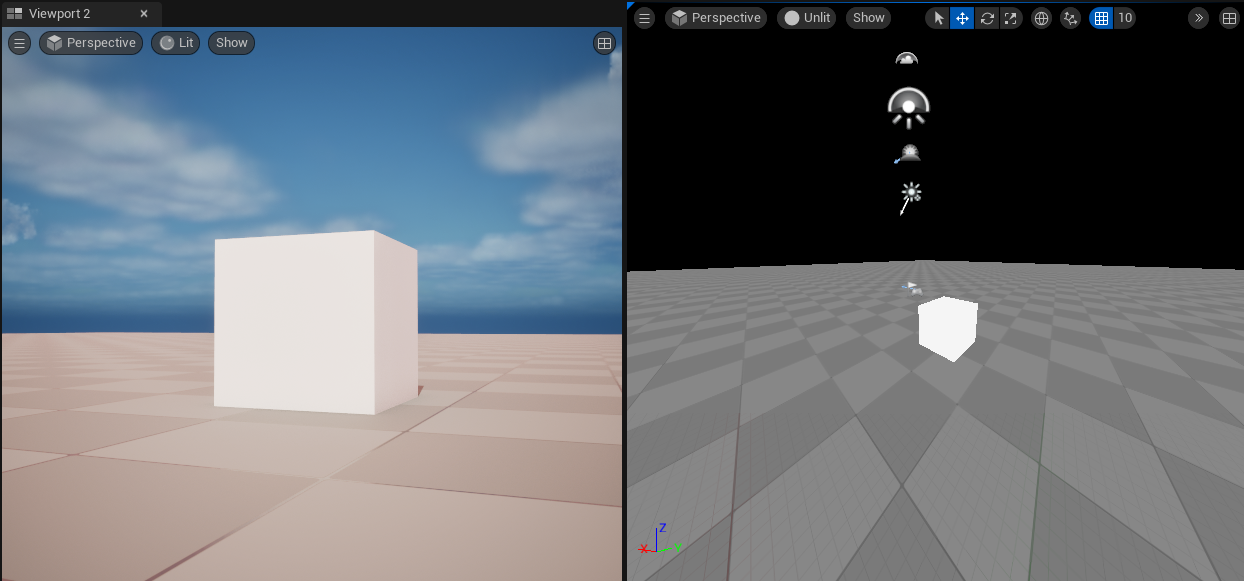Viewport¶
The viewport is essentialy just a view into our 3D world we’re creating.
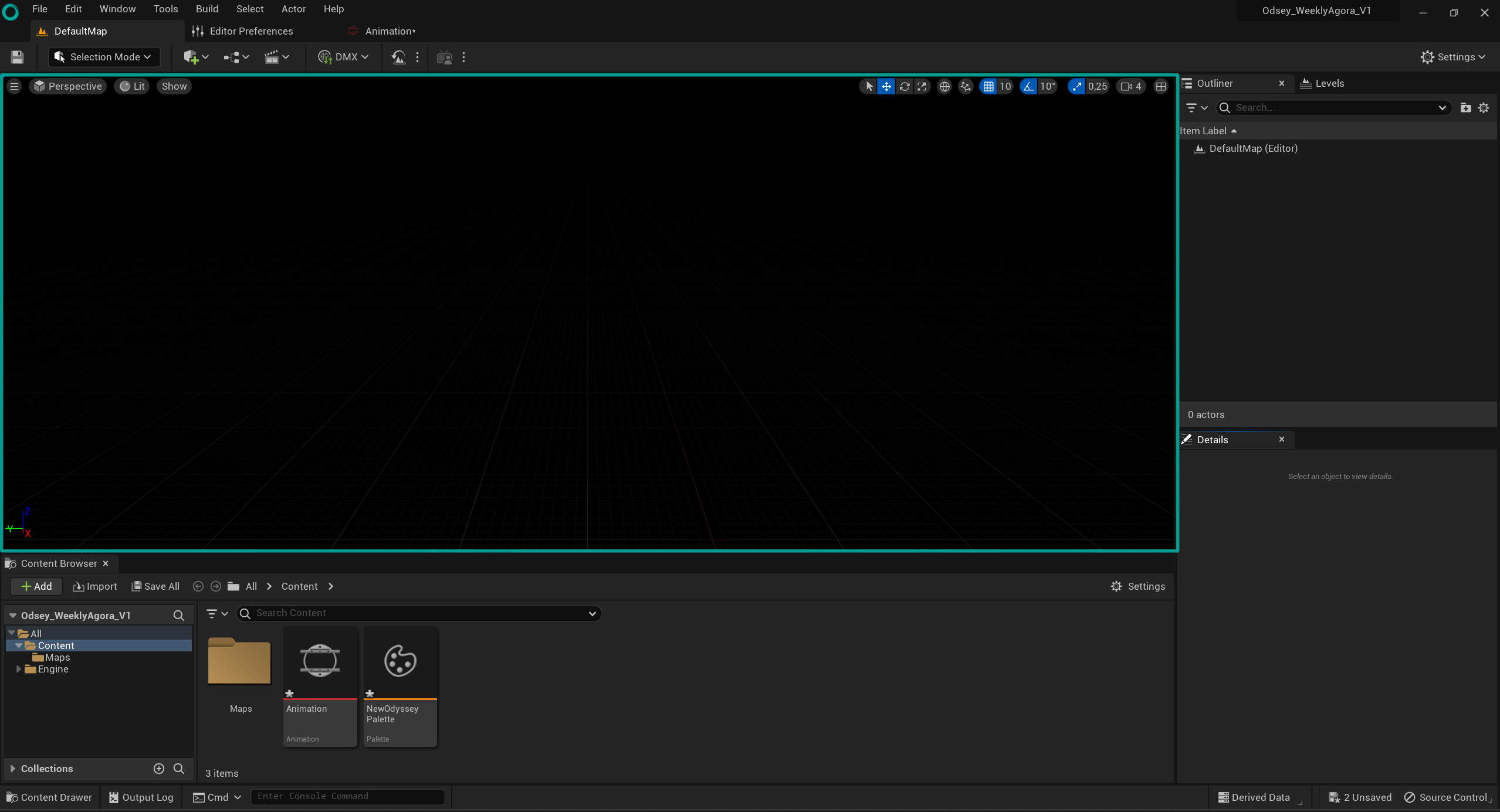
Viewport Settings¶
Options¶
The Viewport Options menu is accessed by clicking the button located in the upper-left corner of the viewport and provides basic rendering settings for the viewport.
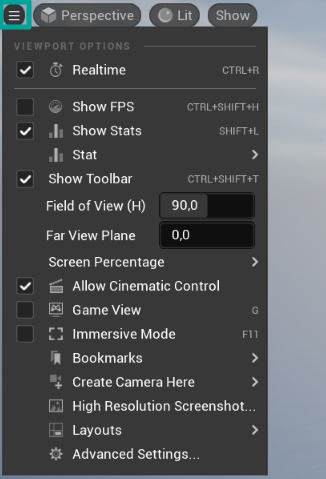
Perspective¶

There are two main types of Viewports : Perspective and Orthographic. The perspective view is a 3D window into the world. The Orthographic views - Front, Side, and Top - are 2D Viewports that each look down one of the main axes (X, Y, or Z).

You can cycle through the types of Viewports by pressing Alt and G, H, J, or K. These set the Viewport to be Perspective, Front, Side, or Top, respectively.
Viewmode¶
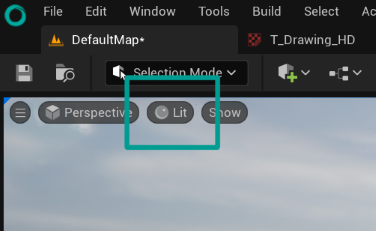
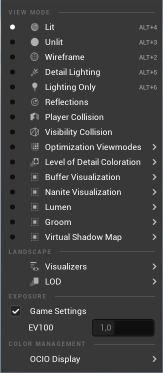
Viewports offer various visualization modes to assist in understanding your scene’s data and identifying errors. While some popular view modes have dedicated shortcuts, you can access all of them via the View Mode menu within the viewport.

The most commonly used view modes are shown here: Lit / Unlit / Wireframe
Show¶
The Show Flags are found under the Viewport Show menu.

They serve as a method to toggle the visibility of numerous elements displayed in the viewport. This includes options to hide various items, such as particles, landscape objects, or more advanced functions like deactivating all sprite icons.
Viewport shortcuts¶
Here is a list of some useful shortcuts.
Viewport Options |
Shortcut |
|---|---|
Show FPS |
CTRL+SHIFT+H |
Game View |
G |
Immersive Mode |
F11 |
Perspective View |
ALT+G |
Lit Mod |
ALT+4 |
Unlit Mod |
ALT+3 |
Note
Some shortcuts using digits will not work on some keyboards, like the French Keyboard.
Transforms¶

This part is detailed in the lesson about Actors
Camera speed¶

By clicking on this icon you can change the speed of you camera, the one you use to move arround in 3D space.
Maximise or restore viewport¶

The Maximize button, located in the upper-right corner of the viewport, is used to toggle between a single viewport and a split 4-view style.

Adding more Viewports¶
You can work with 4 different 3D Viewports, each with different settings. To add a new Viewport, go to the menu “Window ▸ Viewports”.
In the image below, you can see 2 Viewports with different settings:
